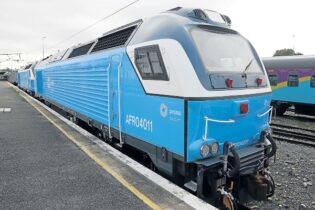 A suggested way to reduce fuel consumption in a fleet is to equip vehicles with low rolling resistance tyres. Speaking to Nobuzwe Mangcu of the South African Tyre Manufacturers Conference, Tristan Wiggill gets to grips with the everyday viability of this option.
A suggested way to reduce fuel consumption in a fleet is to equip vehicles with low rolling resistance tyres. Speaking to Nobuzwe Mangcu of the South African Tyre Manufacturers Conference, Tristan Wiggill gets to grips with the everyday viability of this option.
Fleet and tyre maintenance is essential to achieving optimum tyre performance and lowering tyre costs. Basic maintenance procedures, such as the monitoring of inflation pressures, load control, driver training, and vehicle geometry (alignment), together with correct tyre design selection for the topography and road conditions, will go a long way to achieving the benefits.
Do these tyres cost more? If so, is it not better to buy cheaper, ‘normal’ tyres? While the initial capital outlay may be higher, the offset in operating cost reductions makes it worthwhile, especially in the case of fleet operators. The return on investment is soon realised. The fact that these tyres fit on to standard rims is hugely helpful, as well, ensuring that no additional fitment costs are incurred during purchase or when replacing. What about their longevity and suitability to capricious African road conditions? It is a myth that low rolling resistance tyres compromise robustness of design to achieve their fuel-saving results. There is also no compromise paid to wet grip (braking) performance, lateral stability, or ride comfort. As you mention, driving conditions along African roads vary greatly from region to region. Therefore, one of the most important considerations to make when purchasing tyres is to ensure that the most suitable design within the tyre family is chosen. That, together with basic and ongoing tyre maintenance, ensures tyre longevity.






